In 2025, you’re looking at an average cost of about $152 per kilowatt-hour (kWh) for lithium-ion battery packs, which represents a 7% increase since 2021. Energy storage systems (ESS) for four-hour durations exceed $300/kWh, marking the first price hike since 2017, largely driven by escalating raw material costs and supply chain disruptions. Geopolitical issues have intensified these trends, especially concerning lithium and nickel. Despite these increases, government policies like the U.S. Inflation Reduction Act aim to bolster domestic production, promising optimistic long-term pricing projections in the energy storage sector, with anticipated reductions by 2035. Additional insights await.
Key Takeaways
- The average price of lithium-ion battery packs is $152/kWh, reflecting a 7% increase since 2021.
- Energy storage system costs for four-hour duration systems exceed $300/kWh for the first time since 2017.
- Rising raw material prices, particularly for lithium and nickel, contribute to increased energy storage costs.
- Fixed operation and maintenance costs for battery systems are estimated at 2.5% of capital costs.
- Long-term projections indicate potential cost reductions of 18-52% in energy storage system capital expenditures by 2035.
Current Battery Pricing Trends
In
2025, the landscape of battery pricing reveals some notable trends that impact the green energy sector. The average price of lithium-ion battery packs stands at $152 per kilowatt-hour (kWh), reflecting a 7% increase since 2021. This rise, albeit slight from 2022’s $151/kWh, underscores the ongoing challenges in battery storage economics. Energy storage costs for four-hour duration systems have also surpassed $300/kWh, marking the first cost increase since 2017, driven by escalating raw material prices. While short-term demand for critical battery metals like lithium and nickel may falter due to geopolitical tensions and supply chain disruptions, the long-term outlook remains optimistic, with new lithium supplies expected to alleviate pressure on pricing as sodium-ion batteries gain traction as alternatives in the market.
Supply Chain Influences
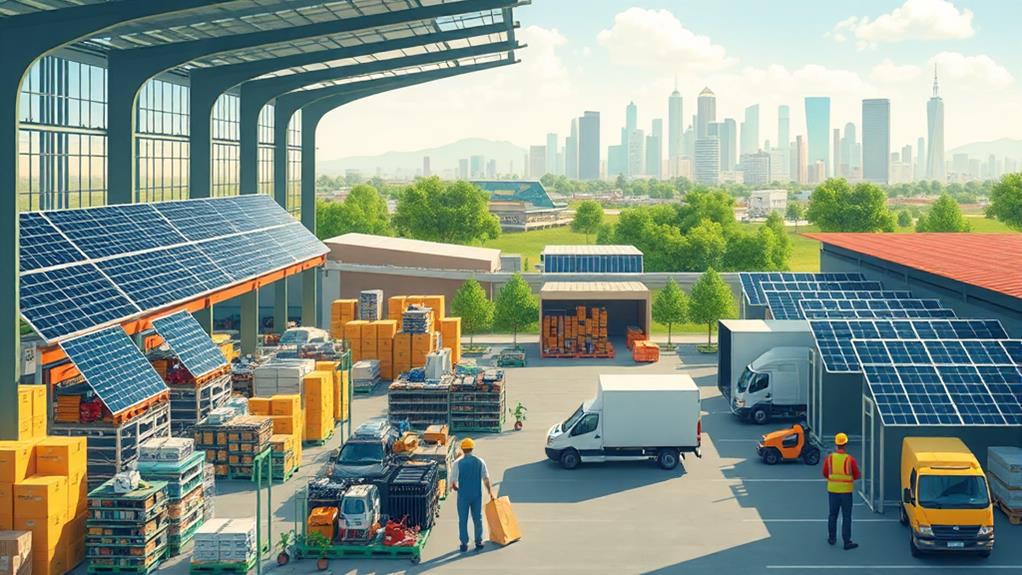
Battery pricing trends are closely tied to the complexities of the supply chain, which has faced significant disruptions in recent years. In 2025, lithium-ion battery pack prices averaged $152/kWh, reflecting ongoing challenges, including rising raw material costs and geopolitical tensions, particularly due to Russia’s war in Ukraine. These factors have led to high prices for essential metals like lithium and nickel, impacting the production of energy storage technologies. However, anticipated new lithium supplies could stabilize costs despite short-term fluctuations. Additionally, the US Inflation Reduction Act‘s investment of over $80 billion aims to enhance domestic production and mitigate vulnerabilities in the supply chain. In Europe, new subsidy schemes may emerge, further influencing the battery supply chain landscape.
Alternative Storage Technologies

As you explore the landscape of alternative storage technologies, you’ll find sodium-ion batteries emerging as a key contender to lithium-ion options, with several major manufacturers set to disclose their product roadmaps in 2025. At the same time, solid-state batteries are being developed with ambitious energy density targets of 500 watt-hours per kilogram, signaling a significant leap in efficiency and performance, with commercialization efforts ramping up within this decade. Additionally, the revival of pumped hydro energy storage is gaining traction, attracting substantial investments aimed at enhancing long-duration storage capabilities, which are essential for optimizing grid reliability amidst increasing renewable energy integration.
Sodium-Ion Battery Developments
Gaining momentum in the energy storage landscape, sodium-ion batteries are emerging as a viable alternative to traditional lithium-ion solutions. With major manufacturers set to disclose sodium-ion roadmaps in 2025, this technology is anticipated to reshape energy storage system costs and enhance the integration of renewable energy sources.
- Potential for reduced production costs by 2026
- At least one sodium-ion powered vehicle model expected
- Response to supply chain disruptions in lithium-ion production
As sodium-ion technology matures, it’s expected to complement existing energy storage solutions, addressing concerns regarding the supply of lithium and nickel. This diversification in battery technology can alleviate market pressures, allowing for more sustainable and cost-effective energy storage options.
Solid-State Battery Progress
The energy storage landscape is evolving rapidly, with solid-state batteries now emerging as a promising alternative to both lithium-ion and sodium-ion technologies. These batteries are being developed to achieve a remarkable cell-level energy density of 500 watt-hours per kilogram, considerably enhancing the performance and safety of energy storage systems. Major manufacturers and startups are ramping up efforts to commercialize solid-state batteries, with substantial announcements expected this decade. The anticipated increase in production capacity could add over 40 GWh to the market, reflecting strong investment interest. As advancements continue, solid-state batteries are anticipated to alleviate market pressures and drive cost reductions in the energy storage sector by 2026, positioning them as a viable solution for the future.
Pumped Hydro Storage Revival
Pumped hydro energy storage is experiencing a significant revival in 2025, drawing attention as an essential long-duration storage technology important for integrating renewable energy. This resurgence is spurred by its reliability and the growing demand for effective energy storage solutions, especially as the energy landscape shifts towards sustainability.
- Committed investments are increasing compared to alternative storage options.
- Policymakers favor pumped hydro for its established technology and capacity for large-scale management.
- It effectively balances renewable energy generation and consumption, despite longer lead times.
As countries prioritize renewable energy integration, pumped hydro energy storage stands out as a critical component in meeting energy demands, ensuring stability, and enhancing grid resilience in this evolving energy paradigm.
Cost Projections for ESS
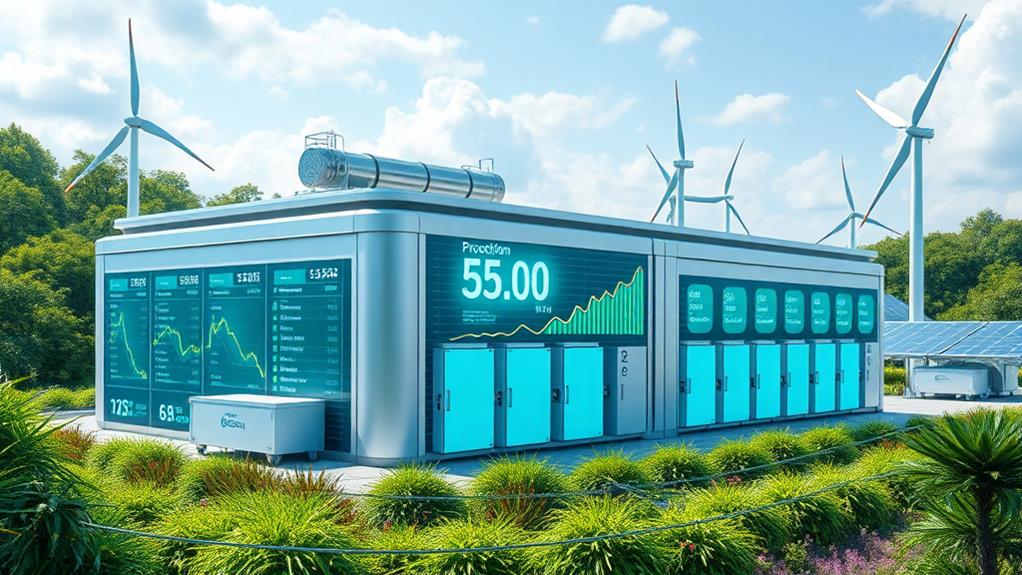
As we look ahead to 2024, energy storage system (ESS) costs are expected to undergo significant changes. Currently, the average cost remains above $300/kWh for four-hour duration systems, primarily due to rising raw material prices since 2017. However, improvements in battery technologies are projected to drive a decrease in costs, with capital expenditures for a 60MW, four-hour battery system estimated to drop by 18% in conservative scenarios and up to 52% in advanced scenarios by 2035. Fixed operation and maintenance costs will remain stable at 2.5% of capital costs, while rapid declines in battery pack costs are anticipated to influence overall ESS pricing, similar to historical trends in photovoltaic systems, enhancing economic viability for consumers seeking freedom in energy independence.
Impact of Government Policies
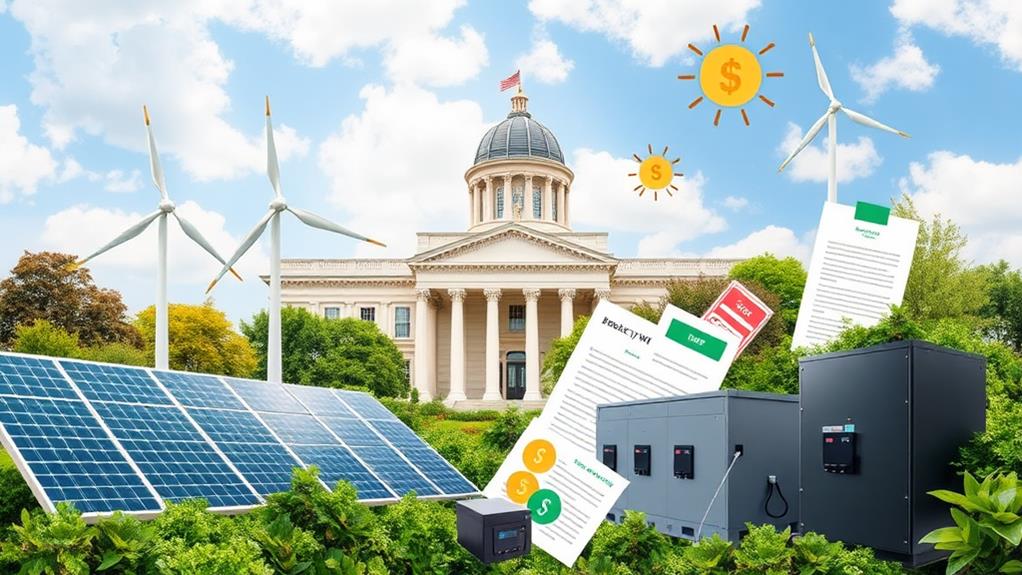
The U.S. Inflation Reduction Act (IRA) is poised to inject over $80 billion into the battery supply chain, which could markedly impact domestic production of energy storage solutions and electric vehicles. In response, the European Union is contemplating new subsidy initiatives aimed at bolstering local battery manufacturing, possibly easing competition regulations to enhance domestic capabilities. These government policies are likely to shape the cost dynamics of energy storage technologies, influencing investment strategies and addressing supply chain challenges amid rising raw material prices.
US Inflation Reduction Act
In 2025, the US Inflation Reduction Act (IRA) is poised to revolutionize the battery supply chain, injecting over $80 billion into domestic production for electric vehicles and energy storage systems. This monumental investment not only strengthens local manufacturing but also incentivizes the production of raw materials, battery cells, and modules through tax credits. By fostering innovation and new business models, the IRA aims to reduce costs and enhance the competitiveness of US energy solutions.
- Stimulates the clean energy economy
- Encourages local production of batteries
- Accelerates the shift to renewable energy storage
These initiatives are critical for addressing supply chain challenges, ultimately promoting a sustainable future where energy storage is both accessible and economically viable for all.
EU Subsidy Initiatives
While the U.S. focuses on its Inflation Reduction Act, the European Union is proactively considering new subsidy initiatives to enhance domestic battery production. These measures aim to incentivize the development of battery energy storage systems, vital for supporting renewable energy targets. By potentially relaxing competition rules, the EU seeks to bolster local manufacturing capabilities, ensuring a robust supply chain that meets rising demand. Additionally, streamlining permitting processes will facilitate the growth of energy storage solutions, making it easier for companies to innovate. With further funding allocated to strengthen the battery supply chain, the EU aims to reduce dependency on external sources, positioning itself competitively against U.S. and Chinese markets in the global battery landscape, fundamental for sustainable energy shifts.
Market Growth and Demand

Significant growth is evident in the global energy storage market, which is projected to add 28GW/69GWh by the end of 2025, nearly doubling the installations from 2022. This surge reflects the increasing demand for renewable energy solutions and highlights a pivotal transformation in energy storage technology. The U.S. battery storage capacity illustrates this trend, skyrocketing from 47 MW in 2010 to 17,380 MW in 2025.
- Large-scale battery storage is expected to soar from 1 GW in 2019 to 98 GW by 2030.
- The energy storage sector experienced over 600% growth in operational systems from 2015 to 2021.
- Market growth persists despite rising energy storage costs, fueled by ongoing investments.
Embracing this evolution is essential for energy independence.
Long-Term Cost Outlook
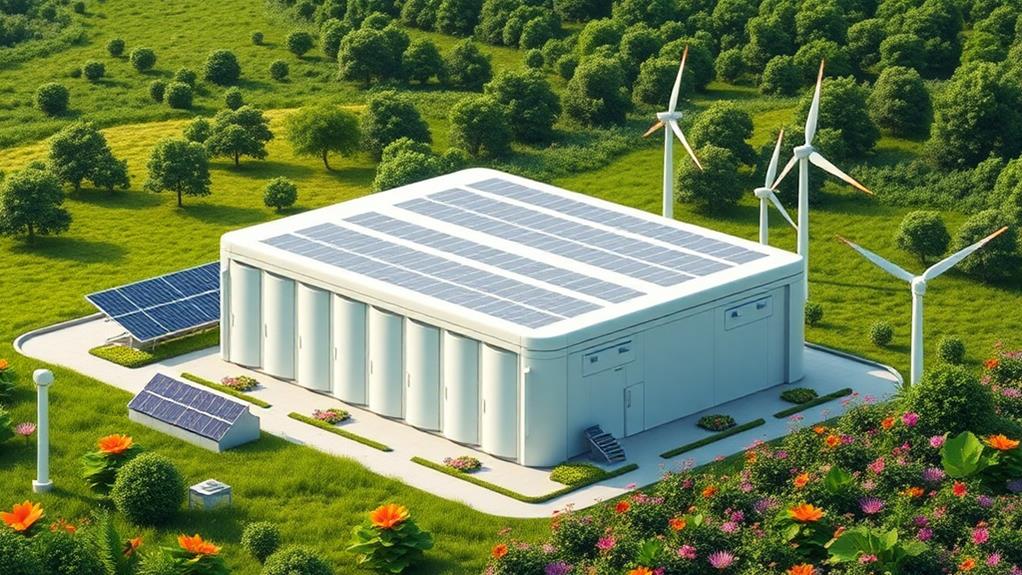
The long-term cost outlook for energy storage systems looks promising, with substantial reductions in capital expenditures expected over the next decade. For a 60MW 4-hour battery system, CAPEX reductions range from 18% to 52% between 2022 and 2035, depending on the scenario. As battery storage costs decline, utility-scale Battery Energy Storage Systems (BESS) will likely experience significant decreases in battery pack costs, outpacing other system components, similar to trends in photovoltaic systems. While short-term fluctuations may arise due to rising raw material prices, anticipated cost declines for 2024 and beyond point towards increased energy capacity and efficiency. By 2050, CAPEX reductions could reach as high as 31% in advanced scenarios, driven by ongoing innovation within the energy storage sector.
Key Takeaways on Pricing
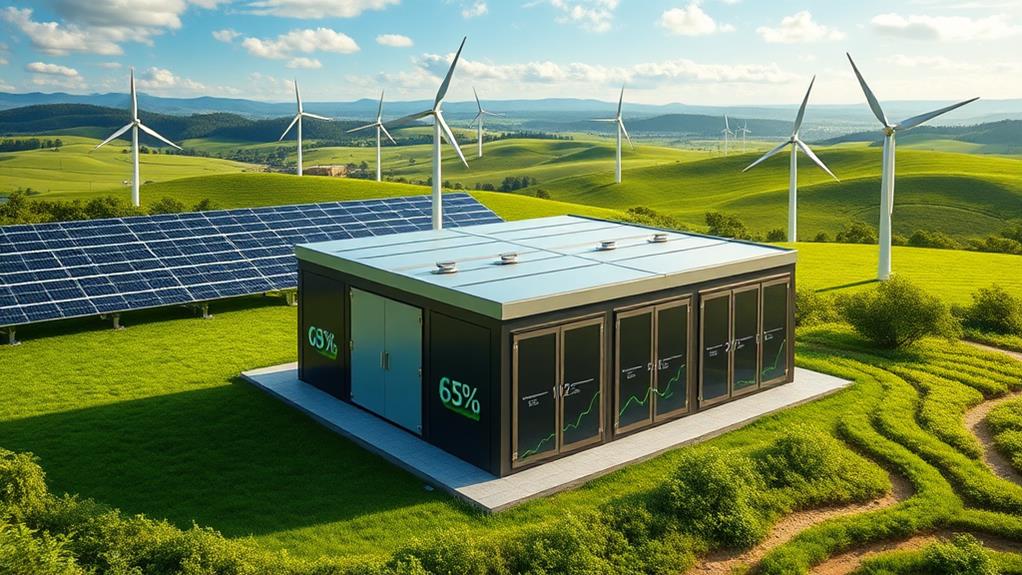
As energy storage technology continues to evolve, understanding current pricing trends is essential for stakeholders in the industry. Here are some key takeaways on pricing for 2025:
- The average price of lithium-ion battery packs stands at $152/kWh, reflecting a 7% increase from 2021.
- Energy storage system costs for four-hour duration systems remain above $300/kWh, marking the first increase since 2017 due to rising raw material prices.
- Current fixed operation and maintenance costs for battery systems are estimated at 2.5% of capital costs.
Anticipated declines in battery cell costs are expected to greatly impact overall system costs, similar to trends seen in photovoltaic systems, offering a glimpse of a more affordable future for energy storage solutions.
Frequently Asked Questions
How Much Will Renewable Energy Cost in 2025?
In 2025, renewable energy costs are lower than ever, thanks to innovations. You’ll see solar panel pricing drop and wind turbine efficiency improve, making it easier for you to choose sustainable energy sources for your freedom.
How Expensive Is It to Store Renewable Energy?
You can’t have your cake and eat it too—storing renewable energy isn’t cheap. Battery technologies and grid integration drive costs up, but investing in innovative storage solutions now could pave the way for future savings.
What Is the Green Energy Trend for 2025?
In 2025, you’ll see a surge in solar innovations and advanced battery technologies. Energy policies will drive this momentum, empowering you to embrace sustainable solutions and enjoy the freedom of cleaner, more reliable energy sources.
Is Green Energy Becoming Cheaper?
Yes, green energy’s becoming cheaper! With solar battery advancements and wind energy innovations, you’re seeing lower costs. While grid integration challenges exist, the trend toward affordable renewable solutions offers more freedom for sustainable energy choices.









